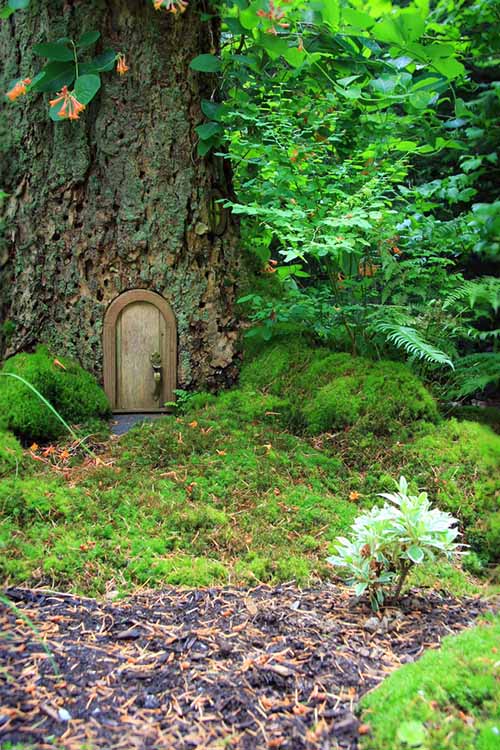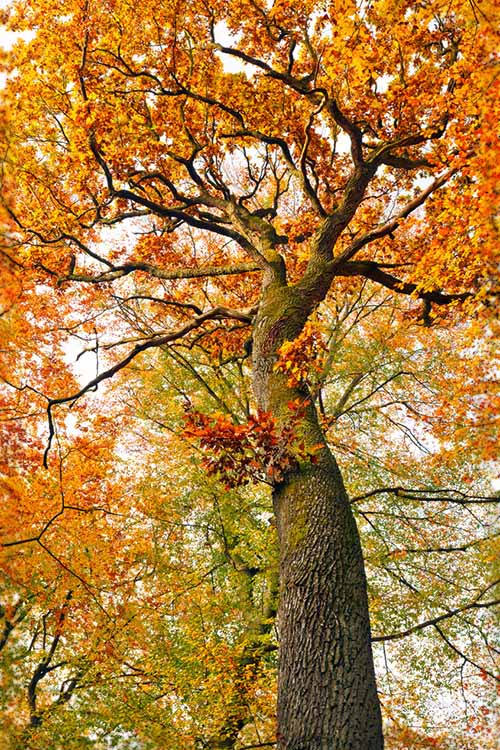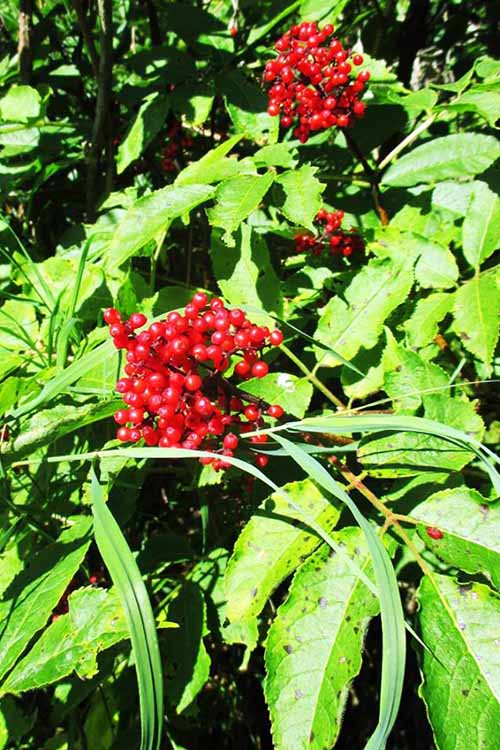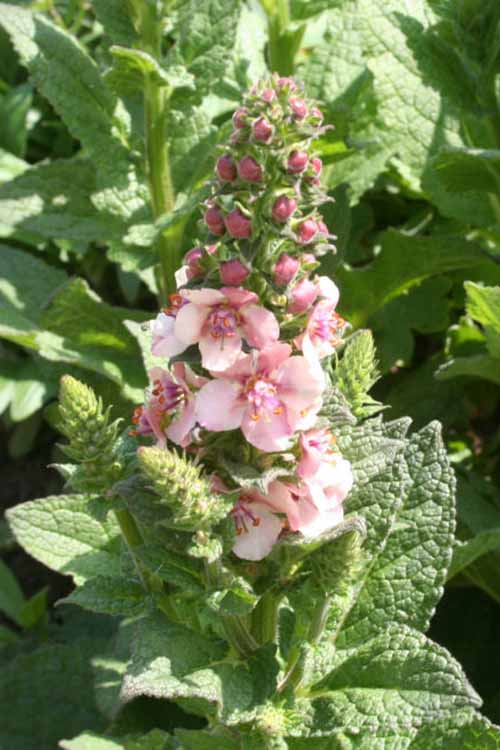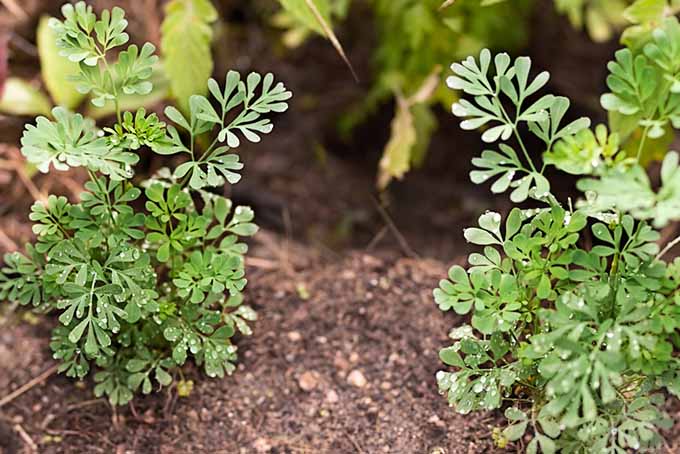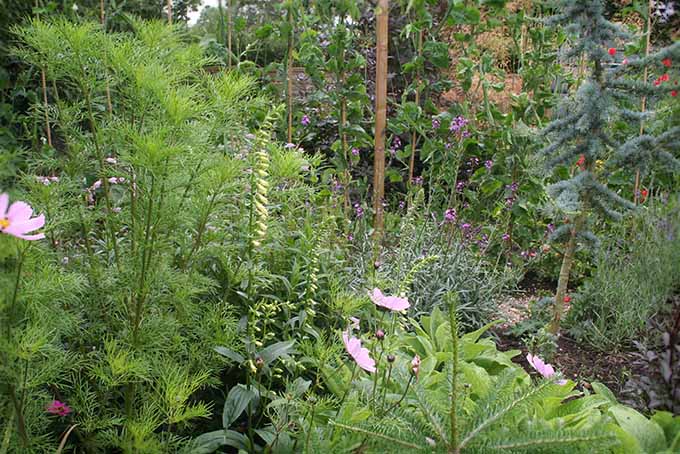So inspiring, in fact, that references to plants are more ingrained into our lives than we might think! Gardening, agriculture, and plant relationships have been very central to humanity; so much so that folklore surrounding them found its way into ancient beliefs, customs, and mottos today, even the names of the plants themselves. How did this come to pass? Let’s take a deeper look at the plant world, ranging across cultures all around the world, and how their mystical influences still touch our lives in modern times – and even some peculiar beliefs we once had (or might still have) about them. I’m sure it will make you think differently about the many trees, shrubs, and herbs you grow in your garden – or maybe get you to consider completely new and magical ones!
Knocking on Wood
Ever heard the saying “knock on wood?” It’s a habit many of us still uphold, especially when one is in need of some good luck, a bit of courage, or hope that something will go well.
But did you know that knocking on or touching wood is actually a tradition steeped in plant folklore? Some of us might knock on wood or talk about it without a second thought, as if it’s a perfectly normal thing to do (and it is, in many ways). But the origins of this saying stretch way back in time to the beliefs of our ancestors. Think about it: so many cultures relied on trees. For some ancient peoples, trees were likely a source of refuge and safety, climbed to avoid danger. For others, they provided shelter and materials for fires, food, and medicine. Because trees provided so much, certain cultures’ fondness – and even awe – of trees grew over time. It is not 100 percent certain from where exactly the saying originated. Some sources find the strongest link to ancient pagan Germanic cultures, who held beliefs that protective spirits lived within trees, according to Evelyn Russell at Touch Wood for Luck. But really, you can find awe in the protective power of trees in many other cultures too, even similar sayings to “knock on wood” in languages like Arabic, Swedish, and countries like Trinidad and Tobago, and Brazil.
Trees move and make noise in the wind, so it’s no wonder to think that that the trees could house gods and spirits, a belief held by certain ancient peoples. Even today, if you can reach a tree and touch the wood, it gives you a safe and protected feeling – a comforting thought rooted deep in our collective folklore memory.
Good Trees, Bad Trees
Knocking on wood wasn’t the only thing exclusively influenced by our reverence for trees. Many other beliefs sprouted throughout history and folklore as well. Sure, touching wood originated from a hope that protective tree spirits would watch over us, making sure that future events would go well.
But with the belief in good spirits also came superstitions about bad tree spirits! Let’s take a look at some of the most revered (and reviled) trees, among their ranks some common species of tree or shrub you may find in your garden – and I’m sure you won’t ever look at them the same way again.
The Holy Oak
In ancient times, oaks were regarded as particularly good and holy trees. Beloved of the Druids and kept in their sacred groves, these wonderful sentinels were thought to have magical qualities, and not just protective ones.
In fact, if you were struggling home from battle or running a fever, the water collecting in an oak tree was often used for healing these maladies well before modern medicine. Oak contains tannins, used for tanning skins and giving the trade its name. These are also an important aging flavor for wines. These tannins were thought to provide this apparent healing magic, but it’s really not magic at all – tannins in oak trees are still used to bring down fever and staunch wounds among herbalists today, being a potent astringent. As you probably well know, oaks are very common and well-known trees, with many species found in gardens and yards all around the world. These trees can be categorized in two broad types – red oaks and white oaks. As a general rule, white oaks can be identified by their smoother, round-lobed leaves, and there are even some evergreen oaks in the mix. White oaks are also favored for their comparatively higher tannin amounts than red oaks, making them more healing (and maybe even more magical)!
The English, pendunculate, or common oak of Europe – Quercus robur – is a wonderful tree of the white oak category. While it is beautiful, this type may be too big for most gardens, casting a bit too much shade. There are some beautiful cultivars of this species available, but all are quite large and grow slowly. My personal favorite of all oaks, though? Q. rubra, or the northern red oak! This brings us to the other category of oaks, the red type. As the name would suggest, red oaks exhibit bright red foliage in fall, unlike the paler tan or brown foliage of white oaks during that time of year. At other times, you can identify red oaks by their elegant green leaves with more pointed lobes. Red oak acorns take a little over two years to mature enough to germinate after they hit the ground. My absolute favorite, the northern red oak, hails from the eastern US. This tree will grow to approximately 120 feet in 20 years – as will the pin oak, Q. palustris, a very close red oak relative.
Some reds include species that, strangely enough, have leaves that don’t turn red in the fall – like the willow oak Q. phellos, for example, along with the Japanese evergreen Q. acuta. There is something very satisfying about collecting acorns and watching them sprout into young oak trees – you could almost call it magic! Find tips on growing and caring for oak trees here.
The Reverent Rowan
Another wonderful tree, the rowan, was always believed to be a force for good, along with the oak. During more superstitious periods of history, it was well advised to use this species for building a child’s cradle, because it was believed to grant protection from evil spirits and witches. There was also a grand tradition of planting a rowan by your door – again, because it would ward off ill-will and black magic! Rowans are members of the genus Sorbus, which includes mountain ashes and whitebeams, as well as species specifically referred to as rowans. The foliage of these tall shrubs (which sometimes grow tall enough to be trees!) range from silver to dark red. Year-round, they are visually superb – with bright flowers, berries, and vivid autumn foliage. These trees tolerate either damp or dry conditions, and are very hardy. There are so many beautiful cultivars, all of which are garden-worthy and which do not grow too big for the average plot. One favorite – a beloved darling of city planners everywhere – is Sorbus aria ‘Lutescens,’ a silver-leafed whitebeam species popular in parks and public areas in many cities around the world. S. cashmiriana, also called the Kashmir rowan, has gorgeous white berries and makes another great choice. Consider putting a rowan in your garden. Who knows – maybe it will help you to feel a little more protected!
The Enchanted Elder
Where the oak and rowan trees were largely revered, the elder tree – genus Sambucus – was always thought to be one that brought bad luck. Worse, in old folklore it was thought that each elder tree had a resident witch living within! Not the kind of wood you’d want to knock on, that’s for sure. It was thought that one should never use elder for a child’s cradle, since it would give witches access to the baby, enabling them to cause harm. This is quite the opposite of rowan – which happens to look quite a bit like some Sambucus species (especially S. racemosa or red elderberry), so it could be both easy and disastrous to mix up the two! Another folkloric belief: never light a fire with elder, or the resident witch or other spirits would become furious. Further, one must never plant an elder tree by one’s door! Why is that? Well, the belief was that each time you opened the door, a bad witch could jump right inside your house! The two most common native elderberries are S. nigra, the European species, and S. canadensis, which is North American. There are some very beautiful cultivars of the common elder. Each exhibits lacy white flowers and edible berries, but the colorful foliage is a real bonus! Newer cultivars have been largely bred for their appearance. One, called Sambucus ‘Thundercloud,’ is a wonderful dark red – but my personal favorite has always been the golden cut-leaved elder, or S. racemosa ‘Plumosa Aurea.’
Ornamental Plant Lore
Trees have always been part of folklore, but lots of other plants have become a part of old stories and beliefs as well – like herbs, shrubs, bushes, flowers, and the like.
Lady’s Mantle
The wonderful Alchemilla mollis or lady’s mantle – a superbly hardy garden plant that can also seed itself prolifically – has ornate, cup-like leaves notable for catching and collecting beautiful beads of dew. Well before the 18th Century in Europe, alchemists thought there was something magical about the plant, and particularly the properties in the dew it collected, according to the Botanic Garden at the University of Oxford. They were said to use the drops to try and turn base metals into gold – hence the name Alchemilla, after the ancient practice of alchemy.
Mullein
A favorite for use in plant borders, Verbascum thapsus has many common names – you may know it best as mullein, which derives from Latin for soft or “mollis” because of its downy, velvety leaves. Another name is hag’s taper, or the candlewick plant. The woolly flowering stems, growing up to 6 feet tall, were often dipped in fat and lit as tapers or a candlewick, and the leaves were sometimes used as floor coverings and insoles for shoes. Maybe giving this a try with your favorite pair of gardening shoes would be worth a shot? Lighting a hag’s taper was also said to ward off bad witches and sorcery, and the dried fluff from the leaves and stems was made into wicks for candles. It was also a superstition that witches would use the tapers themselves for practicing their magic – another great tidbit of folklore on mullein found in M. Grieve’s herbal from the early 1900s. A most useful plant, mullein is still sometimes used today among herbalists and as a home remedy. The leaves and flowers contain anti-inflammatory and demulcent compounds, including polysaccharides, saponins, and glycosides, which are said to be especially helpful against coughs and lung issues. While traditional use is strong, however, medical research on these effects is weak. The plants are biennial, growing as a rosette of soft leaves in their first year, then blooming with striking flowers their second year before they die. There are a great many garden varieties to choose from nowadays, as several lovely hybrids have been produced. Verbascum ‘Raspberry Ripple’ is particularly pretty, being a cultivar of wild mullein chosen for raspberry-red flower characteristics, rather than mullein’s typical yellow flowers.
Don’t Rue the Day
Ruta graveolens, or rue as this plant is better known, is also called the herb of grace – a reference you may stumble across in the works of Shakespeare. Whole bushes of the plant were used in the 16th Century in churches to sprinkle holy water on parishioners, as a sign of repentance and the saving grace of God. As far back as Hippocrates, rue was also used for medicinal purposes to treat cramps, spasms, pains, and coughs. An even more interesting thing about rue: this garden plant made it into the 4 Thieves Vinegar, according to M. Grieve’s A Modern Herbal. This was a famous (but very secret) concoction made in the Middle Ages, which allowed thieves to plunder precious belongings from the dead who had succumbed to the bubonic plague – all without getting sick themselves. The herb was so potently aromatic and bitter, it was able to prevent the spread of the disease by repelling insects and pests, such as fleas – major carriers of the plague in those days. And it still makes an excellent insect repellent today. Rue is a small garden plant with blue-grey foliage, and it is a good foil for other colors. Its growth is shrub-like, reaching about three feet in height and producing small yellow flowers. Hardy to USDA Hardiness Zones 6 through 11, the foliage stands well when cut and used in floral arrangements. Along with the variegated sages, this plant also makes for a great edging in borders. Rue is historically a good herb in folklore – but there are some negative notions about it that we still carry with us today. In fact, the verb “to rue” comes from the name of the plant. To rue something means to have deep regret that it happened – usually because it was frustrating, sad, or painful! Why take that term from a plant? As many gardeners know, touching the plant and the leaves too much can be incredibly irritating to the skin. No doubt, those who stumbled upon rue deeply regretted it – and found it all too easy to compare regrettable experiences to rue, giving rise to the saying “you will rue the day” (a line from Shakespeare) and even “rue and lament.”
Foxgloves
It’s an interesting name for a flower – foxgloves! But was this actually based on a belief that foxes wore gloves? Not exactly. Foxgloves are the common name for the Digitalis genus, used in ancient times as a drug, and still used today in some heart medicines. Digitalin, a cardiac glycoside that can be extracted from the plant, can help steady rapid heartbeats and arrhythmias in small doses. However, the constituents of this beautiful flower were also used as a poison in old times, since these same cardiac glycosides are highly toxic – and best kept away from pets and small children. Of course, foxes never wore gloves, but the name is recorded in England as far back at the fourteenth century. It is probably a distortion of “folks’ glove.” According to M. Grieve, “good folk” was the name sometimes used for fairies – and these little beings were said to live inside the flowers, perhaps being responsible for their potencies, both good and bad. The blooms are heliotropic and they follow the light. During old times, when fairies were strongly believed in, the plant was said to be moving towards any fairy person that could be passing by. These flowers are biennials: producing leaves one year, and flower stems the year after. The common foxglove is D. purpurea, which grows delightful white flowers. These tall, stately blooms look very ghostly and beautiful, and are even visible as dusk falls. There are many hybrid varieties of foxglove available, as well as some in shades of apricot and pink. Read more about foxglove flowers here.
Poisonous Plants
Like foxglove, there are several other very poisonous plants that are beautiful and common in gardens – but which were once associated strongly with bad witches and their nasty ways. Aconitus napellum, also known as monkshood or wolfsbane, is a very attractive border plant with little florets that look like monks’ hoods, hence their common name. Consuming the smallest part of the plant can be fatal (it contains cardiac glycosides, similar to foxglove), and even excessive skin contact can be dangerous! For anyone wanting to handle it – and this included old herbalists who once used it as medicine – it is a good idea to wear gloves. Though it is pretty, it is best to be avoided by pets and children, along with the other ingredients the old hags of folklore were said to use – including popular garden flowers like belladonna, hellebore, and henbane. In fact, all these toxic herbs were once known to be mixed together with animal fat and other ingredients, to make a potent salve called flying ointment that witches would use for magical tasks! It may not have poisoned them, since the plants would absorb much slower into the body topically. But it certainly gave them hallucinations, aiding them with astral travels, flights of fancy, and meetings with other witches on broomsticks, as described in this article from About Religion. Of course, witches didn’t actually fly on their broomsticks in real life – and modern practitioners of witchcraft, Wicca, or other pagan beliefs don’t tamper with these poisonous plants like historians report witches from the Middle Ages did. In the north of England, The Duchess of Northumberland has made a poison garden as part of her striking gardens open to the public at Alnwick Castle. It is quite educational, and helps people recognize plants that are potentially dangerous.
Magic Herbal Spices
Gardens can be abundant and useful – especially for growing spices for cooking, healing, simple beauty, and enjoyment. Interestingly, there are very powerful and magic-tinged memories of our most favorite culinary spices. Some of them are quite fascinating!
Angelica
As the name would suggest, is certainly an angelic plant full of good magic! Legends say that a holy monk dreamed of talking with an angel, who showed him an herb that could heal the bubonic plague – and it just so happened to be angelica. Angelica is a punctuation plant for your garden’s visual mosaic of beauty. The leaves and stems, when cut very young, are delicious when crystalized with sugar or syrup and eaten as a snack. Learn more about growing angelica here.
Fennel
This useful herb was hung over doors to prevent the devil (or witches) from gaining access to homes with dark magic – and fennel seeds were put in keyholes for the same reason.
The spice has an aniseed flavor, and chewing a little bit can help to relieve nausea. It is a decorative garden plant, even if you don’t plant to harvest it as a vegetable. The bronze cultivar of fennel, with the simple name bronze fennel, is particularly beautiful! Read more about growing fennel now.
Oregano
The word for this special spice comes from the Greek words “oros” and “ganos,” – meaning “mountain” and “joy” – and was said to be a harbinger of joy wherever it grew, according to M. Grieve. In ancient Rome, it was used to crown brides and grooms to wish them future happiness. The flowers of oregano are a great mediterranean inspired border addition that’s very hardy, and it blooms all summer long. Read more about growing oregano here.
Parsley
While a sweet and unassuming herb used quite often in cooking, parsley had a reputation for belonging to the devil in some northern European cultures – most notably in the United Kingdom, as depicted in this article from Legendary Dartmoor. The plant is notoriously slow to germinate, and old stories would have it that it went seven times to the devil and back before it germinated. Any seeds that failed to grow were the ones kept by Satan himself! Read more about growing parsley here.
Rosemary
Rosemary was once widely believed to be a protective herb. It was thought to ward off evil spirits and witches in the Middle Ages, and was sometimes dropped into graves so that a deceased loved one would not be forgotten. This is an ingredient beloved by cooks, and it makes a good small shrub in the garden. Read more about growing rosemary here.
Sage
Sage was once dubbed a cure-all by many ancient herbalists in both Europe and Asia – some Arab physicians even believed that it could incur immortality. Called Salvias (from the genus Salvia), there are numerous varieties of sages. Variegated sages (S. officinalis ‘Icterina’) are excellent border plants, though only tolerating temperatures above 40°F. S. microphylla ‘Hot Lips’ is a modern cultivar that is very popular for its bright red and white showy flowers. Read more about growing culinary sage here.
Roses: Flowers of Love
The rose has been an adored flowering shrub for centuries, a sentiment shared among different cultures all around the world. Legend has it that once, all roses were thought to be white – until Venus, the Roman goddess of love, cut herself on the thorns and turned the flower red forever with her blood. For that reason, many associate the rose with love and romance! There is other folklore about the rose, however, that doesn’t have to do with the classic notion of love. The legend of the Cherokee rose, for example – scientific name Rosa laevigata, the state flower of Georgia – centers around a species that came to the U.S. originally from China. It is said that after Cherokee mothers and women who walked the tragic Trail of Tears grieved all those who had fallen, their tears sprouted to become beautiful white roses, which spread all around the country as a reminder. This is just part of the Cherokee rose legend, from the First People website. Do you want to grow the Cherokee rose? Well, you can! R. laevigata is tolerant of most conditions but prefers well drained soil and partial shade. It’s a tough and prolific plant, able to survive droughts. It is a climbing rose that can grow up to heights of twenty feet, and can grow as an evergreen perennial in Zones 4-10 in the U.S. Learn more about growing roses here.
Conclusion
There are so many wonderful plants and trees that you can grow in your garden space – and so many of them have a strong and magical folkloric history. Some of them are wonderful, it’s true – while others may be a bit more dangerous! If you are considering adding any of the plants from this article to your garden, take care to educate yourself on the more poisonous and dangerous ones, especially if you have little ones and pets. Their history is fascinating, that much is for sure – and with the right gardening knowledge and caution, you can enjoy even the most magical and superstitious of plants for yourself. Have you had any experiences with these fascinating garden plants and their old tales? Or do you have your own curiosities and knowledge to share about the lore of these plants – or many others, for that matter? If so, comment below! We’d love to hear from you. The staff at Gardener’s Path are not medical professionals and this article should not be construed as medical advice. Gardener’s Path and Ask the Experts, LLC assume no liability for the use or misuse of the material presented above. Always consult with a medical professional before changing your diet, or using herbal remedies. Photos by Adrian White © Ask the Experts, LLC. ALL RIGHTS RESERVED. See our TOS for more details. Uncredited photos: Shutterstock. With additional writing and editing by Adrian White.



